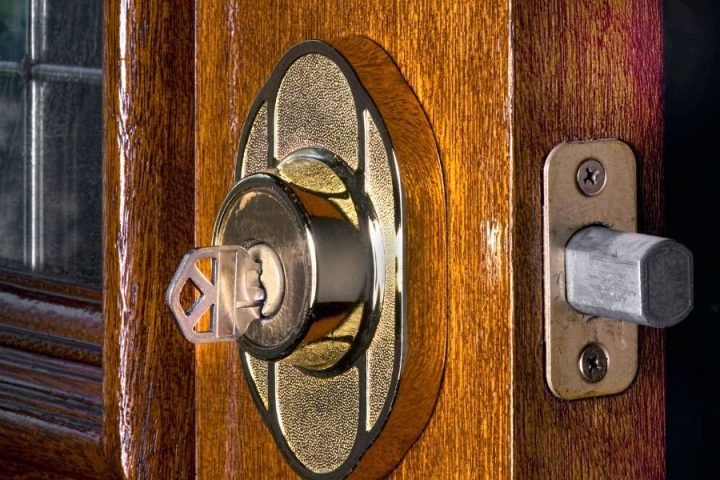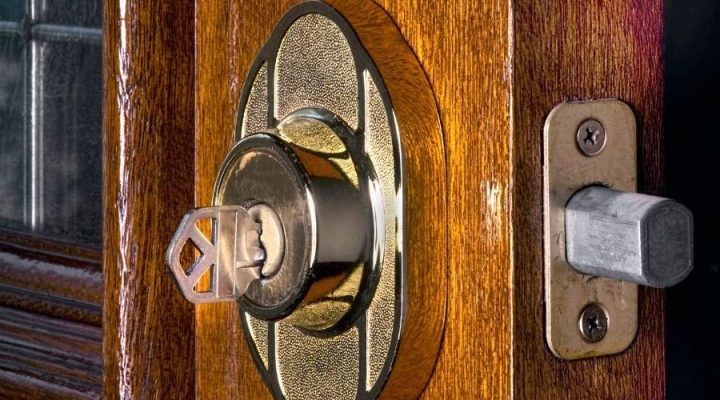
Here’s the thing: a gritty deadbolt isn’t just a quirky personality trait of your lock. It’s a sign that dirt, worn parts, or a lack of care might be taking their toll. Most of us don’t think about the guts of our locks until something goes wrong. But a lock that feels gritty or stiff can quickly turn into a lock that won’t turn at all, which is the last thing you want when you’re juggling groceries and it’s raining.
But don’t panic or rush to call a locksmith just yet. With a bit of troubleshooting, a few household tools, and some simple maintenance, you can usually fix a gritty deadbolt in less time than it takes to binge-watch a sitcom. Let’s walk through what’s going on and how to get that satisfying “click” back when you unlock your door.
Why Does My Deadbolt Feel Gritty?
You might be wondering, “How does a deadbolt even get gritty in the first place?” Well, it comes down to a mix of dust, debris, and the slow march of time wearing down the inside of your lock. Most deadbolts are complex little machines, packed with tiny pins, springs, and tight spaces. These parts need to move together smoothly, almost like a team passing a baton. When dirt or old lubricant starts to gum things up, you get that unmistakable gritty feedback.
Deadbolts from brands like Schlage and Kwikset are built to last, but they’re not immune to the local climate, humidity, or the dust that sneaks in every time your door opens. Over years, even the best lock picks up a bit of grime—think crumbs in your keyboard, but more stubborn.
Here’s the other culprit: keys themselves. If your key isn’t perfectly smooth, or it’s collected pocket lint and dirt, it drags all that inside, scratching and jamming the pins. Sometimes, the lock might have gotten a squirt of the wrong lubricant (like WD-40 instead of graphite), which can make debris stick even more.
When a deadbolt feels gritty, it’s like a warning light on your dashboard. Ignore it and you risk a total lockout.
Checking for the Obvious: Key, Door, or Lock?
Before you get out the tools or start thinking about replacement parts, let’s rule out a few simple things. Grab your key and pay attention to a few details:
- Key Condition: Is your key bent, dirty, or has it been duplicated too many times? A worn key can create friction and a gritty feel.
- Door Alignment: If your door has settled or is hanging crooked, the deadbolt might be rubbing against the strike plate. That creates resistance and sometimes a gritty sensation, especially if metal scrapes against metal.
- Weather and Temperature: Humidity can cause swelling in wooden doors or frames, putting extra pressure on the lock and making things feel rough or sticky.
Here’s what usually works: Clean your key by wiping it with a cloth, and try turning the lock with the door open. If it feels smooth when the door’s open but gritty when it’s closed, the problem may not be the lock itself but a misaligned strike plate.
If the key looks chewed up or the lock is stiff only with that key, try a spare. Sometimes, a simple key swap fixes years of awkward wiggling.
Common Causes of a Gritty Deadbolt
Let me explain what’s happening under the hood. There are a few main culprits when your deadbolt feels like it’s full of sand:
- Dirt and Dust: Dust sneaks in—whether from daily use or exterior doors exposed to the elements. Mixed with old lubricant, it turns into gritty sludge inside the cylinder.
- Worn Internal Parts: Springs and pins inside the lock can wear down or corrode, especially if moisture finds its way in. When metal wears against metal, you get resistance or a rough feeling.
- Wrong Lubricant: The type of lubricant matters. Oils like WD-40 can actually attract more dust and gum up the mechanism. For most deadbolts, a graphite-based or Teflon spray works best.
- Key Problems: Like we mentioned, a worn, bent, or dirty key brings its own set of problems.
If you’ve ever tried syncing devices or troubleshooting battery issues with a remote, you know sometimes the biggest pain is just figuring out what’s actually wrong. Same goes here.
How to Clean and Lubricate Your Deadbolt
If you’ve ruled out door alignment and key issues, it’s time to show your lock some love. Here’s a step-by-step guide to cleaning and lubricating your deadbolt—no need to take the whole thing apart unless things are really bad.
- Step 1: Clean the Key
Wipe down your key with rubbing alcohol and a lint-free cloth. Scrape off any stubborn debris with a soft brush or old toothbrush. - Step 2: Blow Out Debris
Insert the key and wiggle it gently. Use a can of compressed air to blow into the keyhole. This helps clear out loose dirt and dust inside. - Step 3: Apply Lubricant
Spray a graphite-based lock lubricant (never WD-40) into the keyhole. Insert and remove the key several times to spread the lubricant. You’ll probably feel things start to smooth out right away. - Step 4: Test the Lock
Lock and unlock the deadbolt a few times with the door open. If it still feels gritty, repeat the process or try a Teflon-based lubricant.
For most deadbolts, a quick cleaning and the right lubricant can erase years of grit in a few minutes.
When to Disassemble the Deadbolt (and When Not To)
Here’s where things get a bit more advanced, but sometimes surface cleaning just doesn’t cut it. If the deadbolt still feels gritty after cleaning and lubricating, or if it’s starting to jam, you may need to go deeper.
- Remove the Deadbolt: Unscrew the lock from the inside of your door (typically two screws). Carefully pull both sides away. Hold onto all the screws—you don’t want to spend an hour on your hands and knees searching for one under the fridge.
- Inspect the Cylinder: Look for obvious damage, corrosion, or excessive wear inside. If you see broken springs or pins, that’s a sign the lock may need repair or replacement.
- Clean Internals: Use compressed air and a soft brush to clean inside the cylinder. A small amount of graphite lubricant on moving parts can help.
If you’re not comfortable poking around inside your lock, there’s no shame in calling a locksmith. But honestly, most modern deadbolts (especially from big brands) are designed for easy removal and cleaning.
Just don’t take the lock apart unless you’re comfortable putting it back together. Those tiny springs and pins are notorious for launching themselves into the unknown.
Should You Replace or Upgrade Your Deadbolt?
Here’s the million-dollar question: is it worth fixing, or is it time for a new lock? If your deadbolt is older than your favorite hoodie and still acts up after cleaning and lubricating, a replacement might be the way to go.
- Frequent Issues: If you keep troubleshooting the gritty feeling, or if the lock jams often, the internal parts might be too worn out to fix easily.
- Security Concerns: Older deadbolts may not be as secure as newer models with updated features—think anti-pick pins or digital keypads.
- Universal vs. Brand Replacement: Universal locks fit most standard doors, but specific brands like Schlage or Kwikset offer better compatibility and features tailored to their own keys and systems.
Sometimes, upgrading to a new deadbolt is like swapping out your old TV remote for a newer one—it just works better and gives you peace of mind.
Quick Fixes for Emergency Deadbolt Problems
Let’s say you’re in a hurry, guests are arriving, and you don’t have time for a full lock spa treatment. Here are some reliable quick fixes that might get you out of a bind:
- Try Another Key: Sometimes, a spare key that hasn’t been used as much works smoother.
- Use Lubricant: Even if you can’t do a full clean, a squirt of graphite lube can tide you over.
- Wiggle Technique: Gently jiggle the key as you turn. This can help align pins if they’re stuck.
Remember, these are temporary solutions. If the gritty feeling comes back, it’s time to troubleshoot the deadbolt properly—just like you wouldn’t keep hitting reset on your remote forever if it kept losing sync.
Preventing Gritty Deadbolts in the Future
You might be thinking, “I don’t want to deal with this again.” The good news: a little maintenance goes a long way. Here’s how to keep your deadbolt turning smoothly for years:
- Regular Cleaning: Clean your deadbolt (inside and out) once or twice a year with compressed air and the right lubricant.
- Protect the Door: Install a door sweep or weatherstripping to keep out dirt, moisture, and insects that find their way into the lock.
- Key Care: Use clean, smooth keys, and replace them if they get bent or worn down from too many copies.
- Good Lubricant: Stick to graphite or Teflon-based lubricants. Avoid oil-based products that gum up the works.
Think of it like battery maintenance for your gadgets—regular attention saves you a lot of trouble in the long run.
Wrapping Up: Getting Your Deadbolt Working Smoothly Again
Gritty deadbolts are more than just an inconvenience—they’re the lock’s way of asking for a little attention. Luckily, most problems come down to dirt, tired keys, or a simple lack of lubrication. If you take the time to clean, lube, and check your door’s alignment, your Schlage, Kwikset, or whatever brand you trust should spring right back to that smooth, reliable action we all want. And if not? There’s no harm in swapping out an old deadbolt for a new one and enjoying that click every time you come home.
Don’t let a gritty deadbolt slow you down or leave you locked out. With these troubleshooting steps, you’ll know exactly what to check, and you’ll keep your home secure—and your door easy to unlock—for years to come.
